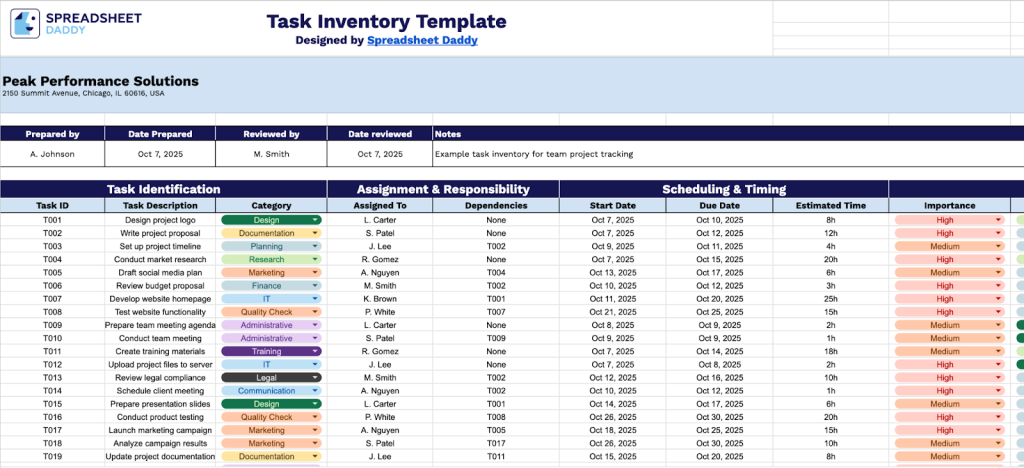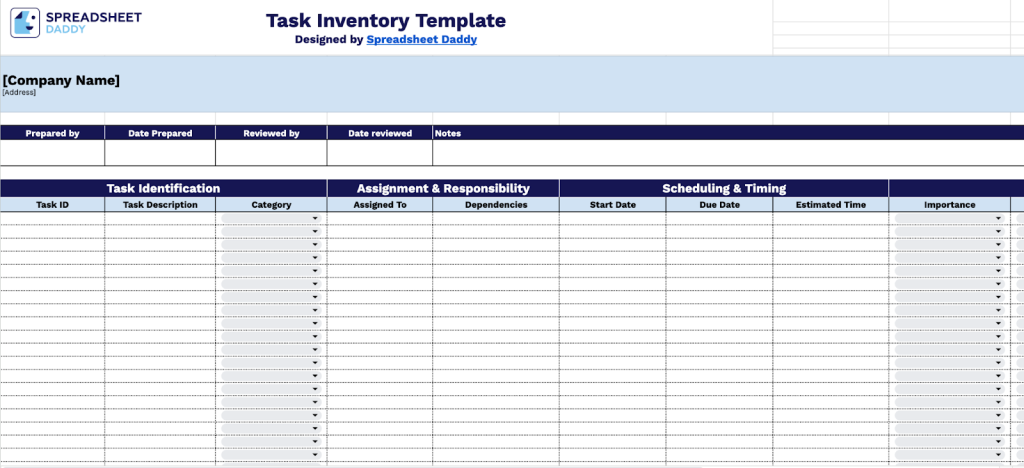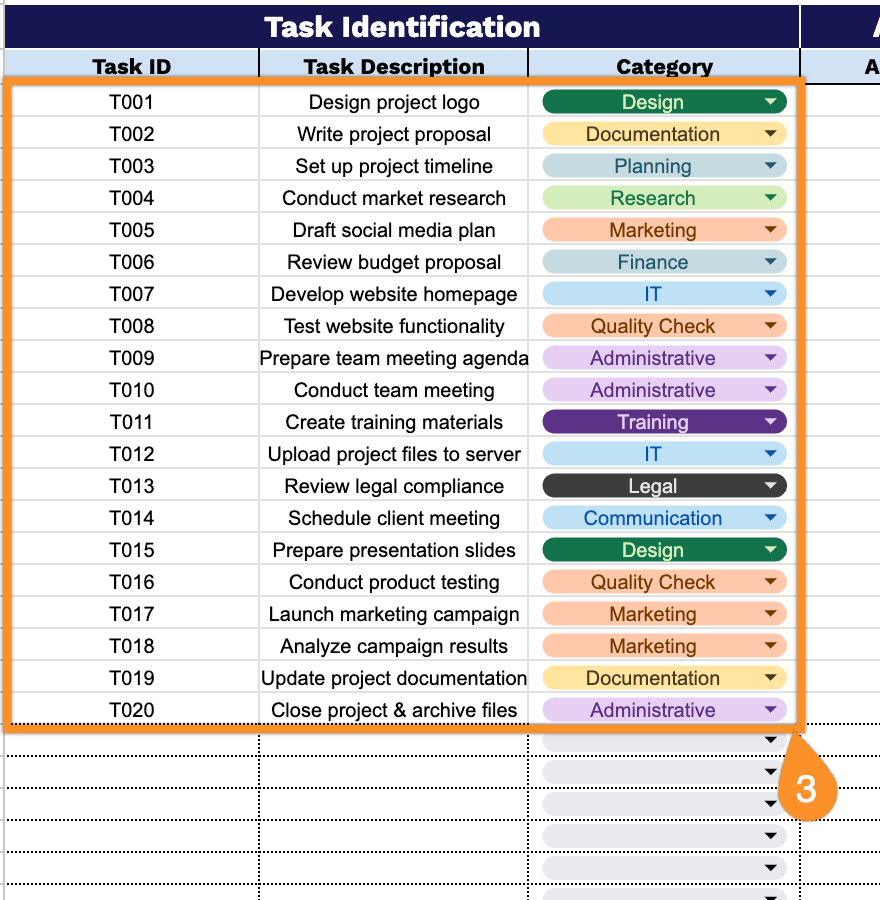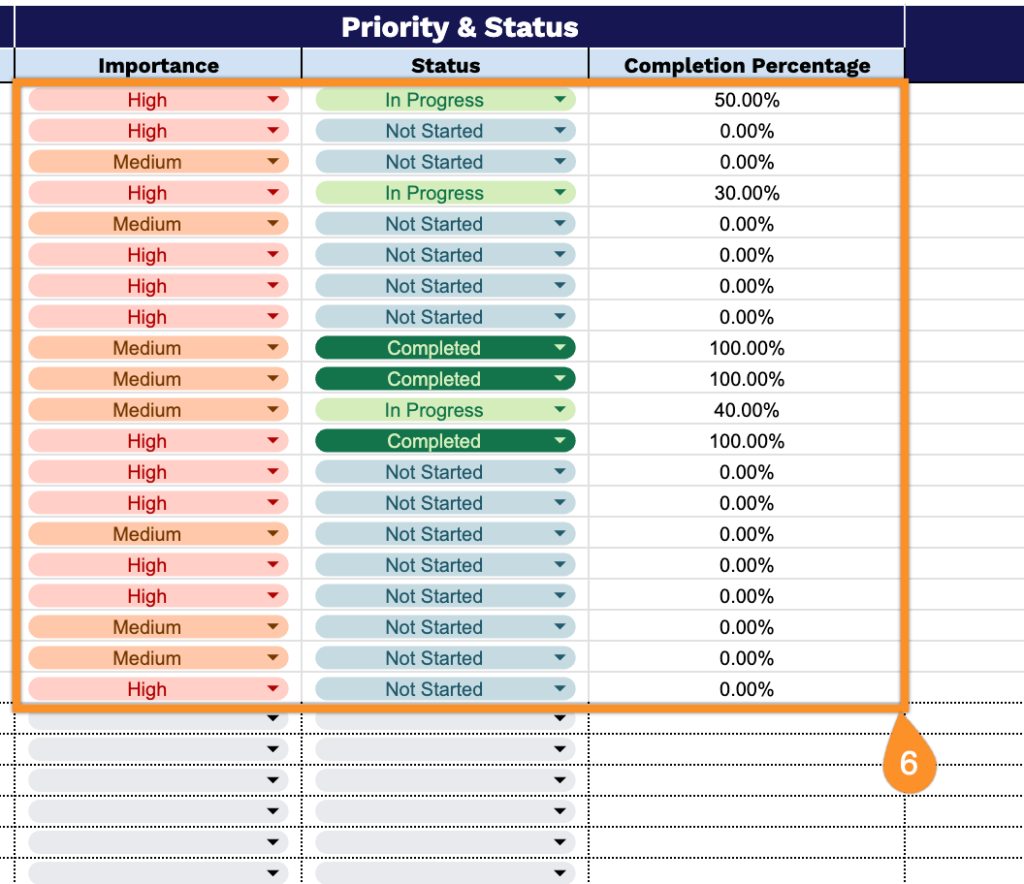Your to-do list is probably living in three different places right now: a notebook, your phone, and somewhere in the back of your mind.
A task inventory spreadsheet brings order to that chaos. Unlike a simple checklist, this tool creates a comprehensive picture of your workload, allowing you to see not just what needs to be done, but how it all fits together.
Our free template gives you a practical framework that adapts to your needs, whether you’re planning a product launch, managing household renovations, or keeping a small team aligned.
Download it in Google Sheets, Excel, or PDF and build a system that works effectively for your specific operations.
Quick Jump
ToggleWhat Is a Task Inventory Spreadsheet?

A task inventory spreadsheet is a structured document that lists and organizes all the tasks or activities associated with a particular job, project, or process.
This tool is commonly used in project management, job analysis, and workflow optimization to ensure nothing falls through the cracks and resources are appropriately allocated.
Download Spreadsheet Daddy’s Free Task Inventory Management Spreadsheet

This task inventory template helps you keep track of everything your team needs to get done in one organized place.
It’s designed to give you a clear view of who’s working on what, when things are due, and how projects are progressing, and you can easily customize it by adding or removing columns to match the way your team actually works.
What’s included
- Comprehensive project documentation: Capture essential project information with customizable header fields including company name, address, preparer and reviewer details with corresponding dates, plus a dedicated notes section for high-level context and special instructions.
- Task identification system: Organize and categorize tasks efficiently with unique Task ID numbers for reference tracking, detailed Task Description fields for comprehensive activity explanations, and Category classification to group related tasks by department, project phase, or work type.
- Assignment and dependency management: Designate clear ownership with the Assigned To column for accountability tracking. The Dependencies field helps you map task relationships and identify which activities must be completed before others can begin.
- Scheduling and time allocation: Plan and track timelines effectively with Start Date and Due Date columns for deadline management. The Estimated Time field lets you forecast resource requirements, balance workloads, and create realistic project schedules.
- Priority tracking and progress monitoring: Evaluate task urgency through the Importance field for ranking critical activities. Track current progress with the Status column, monitor completion percentages for detailed visibility, and document task-specific updates in the additional Notes column for ongoing context and communication.
How to Use Our Task Inventory Spreadsheet Template
1. Access and customize your task inventory by downloading this template as Excel or PDF, or generating your own Google Sheets copy.
2. Fill out the company name, address, inventory coordinator info, and date done. Note the supervisor’s name and check date. Put additional comments in the Notes field.

3. Complete the Task Identification section by entering all essential task information:
- Task ID: Enter the unique identifier or reference number assigned to each task for tracking and organization.
- Task Description: Specify the complete details of what needs to be accomplished, including scope and deliverables.
- Category: Select the appropriate task classification (Administrative, Planning, Communication, Research, etc.).

4. Define accountability and dependencies in the Assignment & Responsibility section for team coordination:
- Assigned To: Enter the name of the team member or department responsible for completing the task.
- Dependencies: Document any prerequisite tasks or resources that must be completed or available before this task can begin.

5. Establish timeframes and effort estimates in the Scheduling & Timing section for project planning:
- Start Date: Record when work on this task is scheduled to begin.
- Due Date: Set the deadline by which the task must be completed for milestone tracking.
- Estimated Time: Enter the projected number of hours or days required to complete the task for accurate resource allocation.

6. Monitor progress and urgency in the Priority & Status section for workflow management:
- Importance: Indicate the priority level (E.g., Critical, High, Medium) based on the business impact and urgency.
- Status: Track the current state of the task (Not Started, In Progress, Completed, On Hold, etc.).
- Completion Percentage: Document the proportion of work finished to visualize progress toward completion.

7. Document key observations and additional context in the Notes field to improve your task management and team collaboration.
